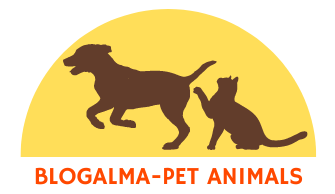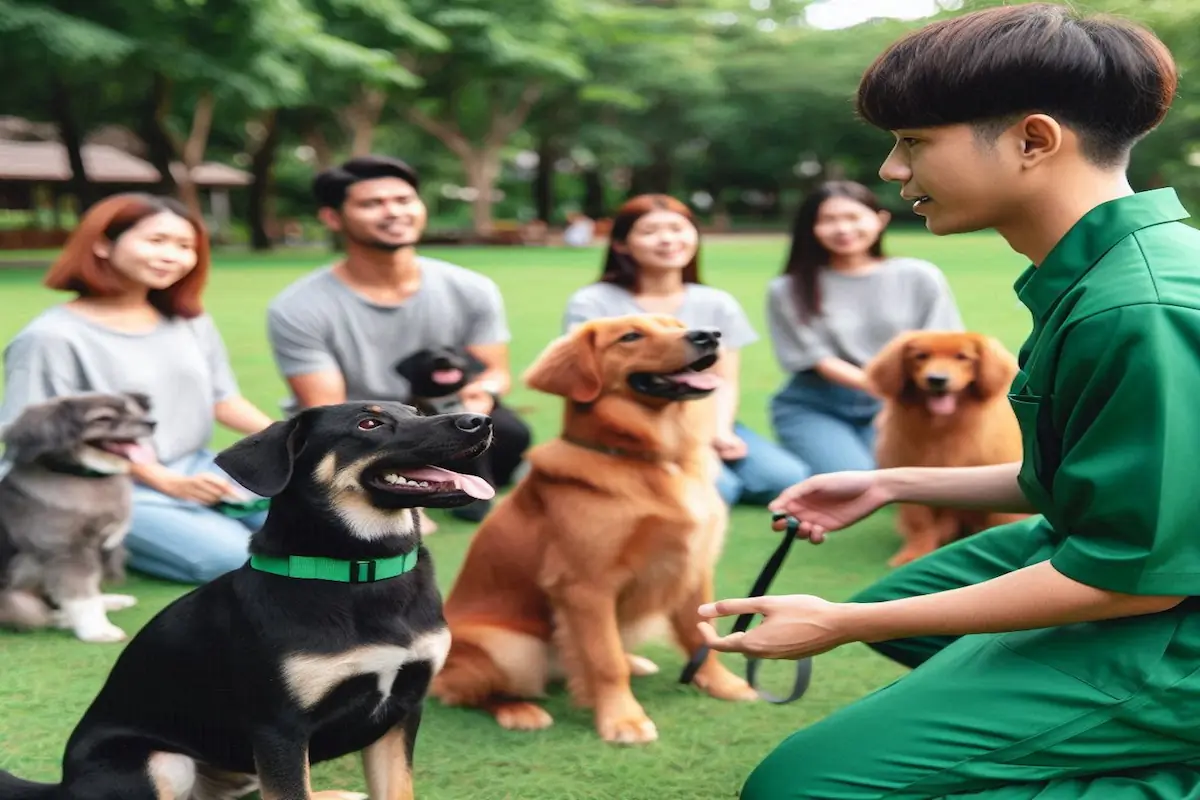How to Train Your Dog
Introduction
Training your dog is one of the most rewarding experiences you’ll have as a pet owner. It’s more than just teaching your dog tricks—it’s about building a strong, trusting relationship. Whether you’ve got a new puppy or an older dog, training is essential for ensuring that your dog is well-behaved, safe, and happy. In this article, we’ll walk through every step of dog training, from basic obedience to advanced commands. So, grab some treats, and let’s get started!
Why Train Your Dog?
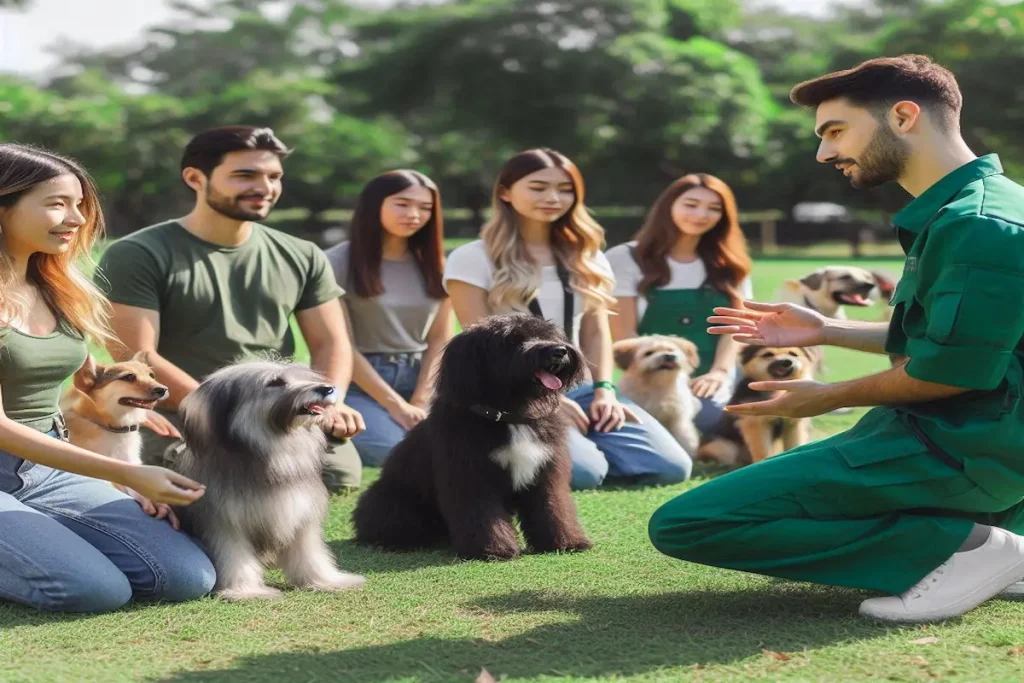
Have you ever seen a dog that behaves so well it seems like they understand every word their owner says? That’s the magic of training. When you train your dog, you’re not just teaching them to follow commands—you’re improving their quality of life and making your own life easier too.
Training your dog:
- Prevents unwanted behaviors: Teaching commands like “sit” or “stay” helps avoid issues like jumping on guests or pulling on the leash.
- Keeps them safe: Commands like “come” or “leave it” can protect your dog in dangerous situations.
- Strengthens your bond: The more you work together, the more trust and understanding you build with your dog.
Understanding Dog Psychology
Before diving into training, it’s essential to understand a little about how dogs think. Dogs are pack animals and respond well to clear, consistent leadership. They also thrive on positive reinforcement, meaning they’ll repeat behaviors that lead to rewards.
Dogs learn through:
- Repetition: Consistent cues and actions help them understand what you want.
- Association: They connect commands with actions (e.g., “sit” means to place their bottom on the ground).
- Rewards: Praise, treats, or toys after a correct action make them more likely to repeat the behavior.
Related: Essential Dog Training Words Every Owner Should Know
Key Principles of Effective Dog Training
There are a few golden rules to successful dog training. Let’s break them down:
- Consistency: Use the same words and actions every time. If you use “sit” one day and “sit down” the next, your dog may get confused.
- Timing: Reward your dog immediately after they perform the correct action. This helps them understand which behavior earned the treat.
- Positive Reinforcement: Reward good behavior rather than punishing bad behavior. Dogs learn faster when they’re motivated by something positive.
Starting With Basic Obedience Training
The foundation of all dog training starts with basic obedience commands. These are the first steps to teaching your dog how to behave both at home and in public. The essential commands include:
- Sit: A great starting command that helps your dog stay calm.
- Stay: Keep your dog in one place until you release them.
- Come: The recall command, which is critical for safety.
- Down: Helps your dog settle in a relaxed position.
- Leave it: Teaches your dog to ignore distractions, such as food or toys.
Crate Training: A Safe Space for Your Dog
Crate training is often misunderstood, but when done correctly, it provides your dog with a safe, comfortable place to rest. The crate should never be used as a punishment but rather as a cozy den where your dog can relax. Here’s how to introduce your dog to their crate:
- Step 1: Place treats and toys in the crate to create a positive association.
- Step 2: Encourage your dog to explore the crate without forcing them in.
- Step 3: Gradually increase the time your dog spends in the crate, rewarding calm behavior.
Crate training is especially helpful for housebreaking and preventing destructive behavior when you’re not home.
Housebreaking Your Dog
Housebreaking—or potty training—is one of the first things you’ll want to tackle. Consistency, timing, and praise are crucial here. Here are some tips to make the process smoother:
- Establish a routine: Take your dog out first thing in the morning, after meals, and before bed.
- Reward good behavior: When your dog goes potty outside, offer praise and a treat.
- Be patient: Accidents will happen, especially with puppies, so stay calm and continue reinforcing the desired behavior.
Leash Training: Walking Without Pulling
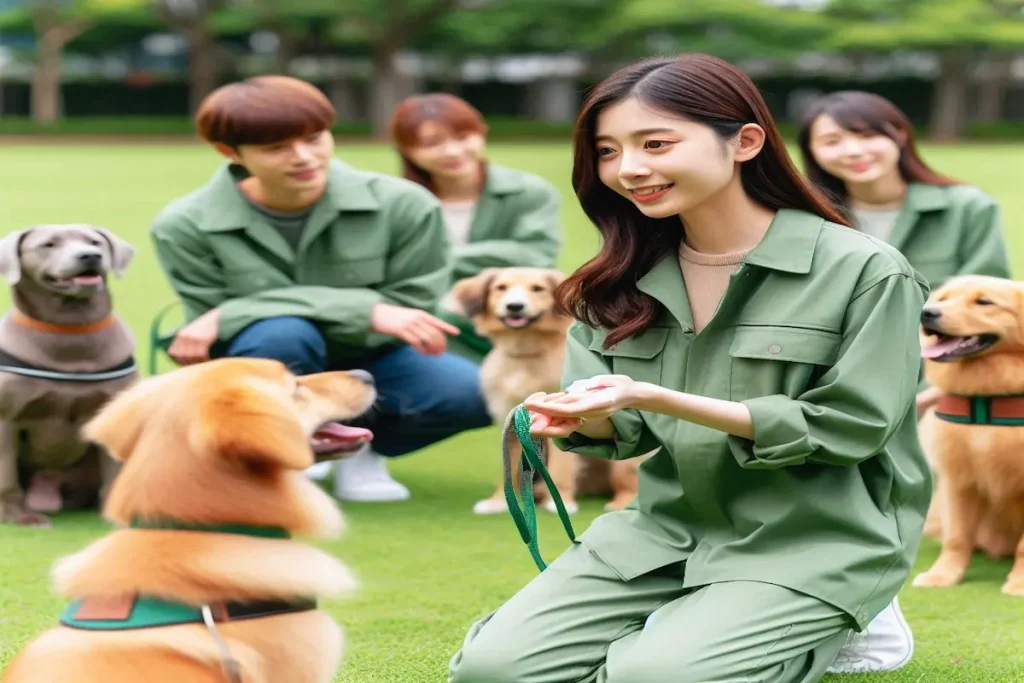
One of the most common challenges for dog owners is teaching their dog to walk on a loose leash without pulling. Dogs naturally want to explore their surroundings, but it’s important to teach them how to walk politely by your side. Here’s how:
- Start indoors: Begin leash training in a distraction-free environment like your home or yard.
- Use treats: Encourage your dog to walk beside you by offering treats or praise.
- Stop when they pull: If your dog pulls, stop walking and wait for them to return to your side before moving forward again.
With practice, your dog will learn that walking calmly leads to more enjoyable outings.
Socializing Your Dog
Socialization is a critical part of dog training, especially for puppies. Introducing your dog to a variety of people, dogs, and environments helps them feel more comfortable and reduces anxiety in new situations. Here’s how to get started:
- Start early: Begin socializing your dog as soon as they’re vaccinated.
- Introduce gradually: Don’t overwhelm your dog with too many new experiences at once.
- Reward calm behavior: Praise your dog for remaining calm and friendly during new interactions.
A well-socialized dog is less likely to exhibit fear-based aggression or anxiety.
Using Positive Reinforcement in Training
Positive reinforcement is the foundation of modern dog training. Instead of punishing your dog for unwanted behavior, you reward them for doing the right thing. This could be with treats, praise, or play. Here’s why it works:
- Encourages good behavior: Your dog is more likely to repeat behaviors that lead to rewards.
- Builds trust: Positive reinforcement creates a stronger bond between you and your dog.
- Increases motivation: Dogs love rewards, so they’ll be eager to learn and perform.
Avoiding Punishment-Based Training
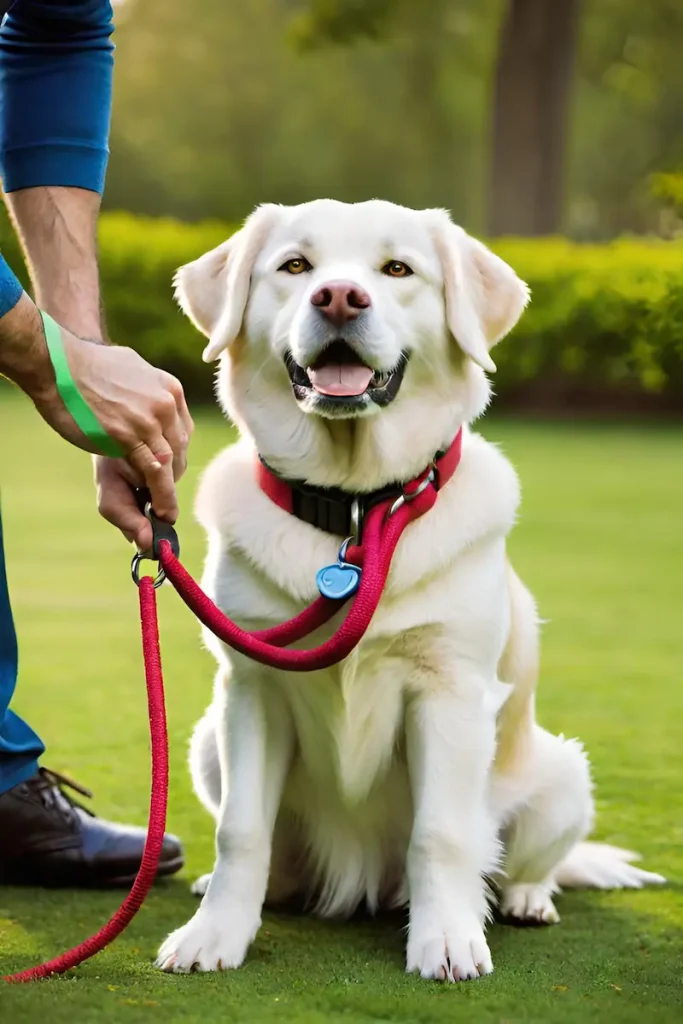
While it may be tempting to scold your dog when they misbehave, punishment-based training often leads to fear and anxiety. Instead of teaching your dog what not to do, focus on showing them what you want them to do. Here are some alternatives to punishment:
- Redirect unwanted behavior: If your dog is chewing on something they shouldn’t redirect them to a toy instead of yelling.
- Ignore bad behavior: Sometimes, simply ignoring attention-seeking behavior is enough to stop it.
Positive training builds a confident, happy dog who trusts you.
Advanced Commands for More Control
Once your dog has mastered the basics, you can move on to advanced commands that provide more control in challenging situations. These commands include:
- Leave it: Teaches your dog to ignore distractions.
- Drop it: Ensures your dog will release objects from their mouth.
- Heel: Helps your dog stay close to your side while walking, even without a leash.
These advanced commands are especially useful for keeping your dog safe in unpredictable situations.
Training for Problem Behaviors
Every dog has their quirks, but some behaviors—like excessive barking, jumping, or chewing—can become problematic if left unaddressed. Here’s how to tackle some common issues:
- Barking: Identify the cause (e.g., boredom, fear) and use training techniques to reduce barking, such as desensitization or providing more exercise.
- Jumping: Teach your dog to greet people politely by reinforcing the “sit” command.
- Chewing: Provide appropriate chew toys and redirect your dog away from furniture or shoes.
With patience and consistent training, you can manage and correct these behaviors.
Training Your Dog for Off-Leash Control
One of the most impressive skills your dog can learn is off-leash control. This gives them the freedom to explore while still responding to your commands. To get started, follow these steps:
- Start with a long lead: Practice commands like “come” or “stay” while your dog is on a long leash.
- Gradually reduce the leash: As your dog becomes more reliable, shorten the leash until they’re ready for off-leash practice.
- Use distractions: Test your dog’s recall in various environments to ensure they can respond under any condition.
Training for off-leash control takes time and should only be done in safe, enclosed areas at first.
Training Tips for Different Dog Breeds
Not all dogs are the same when it comes to training. Some breeds are more independent or stubborn, while others are eager to please. Here are some breed-specific tips:
- Herding breeds (e.g., Border Collies): These dogs need lots of mental stimulation and often excel at advanced training.
- Toy breeds (e.g., Chihuahuas): They may be small, but they still need consistent training and boundaries.
- Hound breeds (e.g., Beagles): Hounds can be independent, so focus on making training fun and rewarding.
Understanding your dog’s breed can help tailor the training process to their natural instincts and temperament.
Training Adult Dogs vs. Puppies
While it’s easier to start training a dog when they’re young, adult dogs can learn new tricks too! However, there are some differences between training a puppy and an older dog:
- Puppies: Puppies are like sponges, absorbing new information quickly, but they also have short attention spans.
- Adult dogs: Older dogs may have ingrained habits that can be harder to break, but with patience, they can still learn new commands.
In both cases, the key to success is consistency, patience, and positive reinforcement.
Using Clicker Training
Clicker training is a popular method for shaping behavior using a small device that makes a clicking sound. Here’s how it works:
- Step 1: Use the clicker to mark the exact moment your dog performs the desired behavior.
- Step 2: Follow the click with a reward, such as a treat or praise.
- Step 3: With repetition, your dog will associate the click with a positive outcome and learn faster.
Clicker training is highly effective because it provides immediate feedback, making it easier for your dog to understand what you want.
Consistency and Patience: The Cornerstones of Success
Training a dog isn’t a one-time event—it’s an ongoing process. Consistency and patience are your best friends when it comes to training success. Remember:
- Stick to a routine: Dogs thrive on routine, so set aside time each day for training.
- Be patient: Dogs don’t learn overnight. It may take weeks or even months for some behaviors to become ingrained.
- Celebrate small victories: Every bit of progress is a step toward success, so keep praising your dog’s efforts.
The Role of Exercise and Mental Stimulation
A well-exercised dog is a well-behaved dog. Physical exercise helps burn off excess energy, while mental stimulation keeps your dog’s mind sharp. Here’s how exercise ties into training:
- Walks and play: A tired dog is more likely to focus during training sessions.
- Mental challenges: Puzzle toys, hide-and-seek, and scent games can engage your dog’s mind, making them more receptive to learning.
A balance of physical and mental activities will set your dog up for success during training.
Conclusion
Training your dog is a rewarding experience that strengthens your bond, improves communication, and leads to a well-behaved pet. From basic obedience commands to advanced tricks, every step you take helps your dog understand their role in the family. With patience, consistency, and plenty of positive reinforcement, you’ll enjoy the benefits of a well-trained dog for years to come.
FAQs
Q1: How long does it take to train a dog?
A: It depends on the dog and the behavior being taught. Basic commands like “sit” can be learned in a few days, while advanced skills may take months of practice.
Q2: What’s the best age to start training a dog?
A: Puppies as young as 8 weeks can begin basic training, but dogs of any age can learn with the right approach.
Q3: Can I train my dog without professional help?
A: Yes! Many dog owners successfully train their dogs at home using positive reinforcement techniques. However, professional trainers can offer guidance for more complex behaviors.
Q4: What if my dog isn’t responding to training?
A: Patience is key. If your dog isn’t responding, try breaking the behavior down into smaller steps, practicing in a quieter environment, or seeking help from a professional trainer.
Q5: How do I stop my dog from pulling on the leash?
A: Teach your dog to walk calmly by stopping when they pull and rewarding them for walking beside you. Over time, they’ll learn that pulling doesn’t get them where they want to go.
